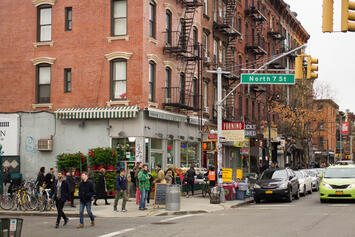
I remember being very surprised the first time I read about activists in poor communities opposing investment in their parks. I had always thought of such activists as lobbying for public investment into their communities.
But as it turns out, concern over inequity is sometimes trumped by worry about displacement. Some minority neighborhoods fear that public investment into parks is part of a program to pave the way for what they call “green gentrification.” This concern is not entirely misplaced. New parks, particularly linear parks or greenways like Chicago’s 606 Trail, have sent adjacent property values skyrocketing.
The typical rejoinder to these fears is to cite studies showing that gentrification-driven displacement either doesn’t happen in practice or is limited to a small number of locales nationally. But even if true, this misses a bigger point: Inflows of higher-income people do cause cultural displacement, as the values of the new wealthy residents become dominant in the community. Perhaps very few poor people were displaced by gentrification in Williamsburg, Brooklyn. Nevertheless, if you visit today, you see a neighborhood almost entirely turned into an upscale village. Elite culture is now dominant there.
This can have practical and tangible consequences for daily life in these neighborhoods. In Oakland, Calif., gentrifiers have filed complaints with the city about gospel choir practice sessions at local Black churches, accusing them of being a noise nuisance. These new residents are very vocal about imposing their norms and preferences on the community. They have the money and clout to influence city officials. Indeed, the city of Oakland sent a threatening letter to at least one church over the matter. So even if people are not physically displaced, they can be culturally displaced by development.
In one of my first columns for Governing back in 2014, I questioned whether many civic leaders actually want economic development. As Jane Jacobs noted in The Economy of Cities, “Economic development, whenever and wherever it occurs, is profoundly subversive of the status quo.” People in leadership positions in a community are generally benefiting from the status quo, hence can fear change.
This can apply to middle-income and poorer residents as well as affluent ones. They may not have much money or great public amenities, but one thing they often do have in these neighborhoods is a strong sense of community and cultural ownership. Some of them seem to have concluded that it’s better to keep those things and tolerate poor public services and infrastructure rather than risk losing much of what they have through gentrification.
Read the rest of this piece on Governing.com.
Aaron M. Renn is an opinion-leading urban analyst, consultant, speaker and writer on a mission to help America's cities and people thrive and find real success in the 21st century. He focuses on urban, economic development and infrastructure policy in the greater American Midwest. He also regularly contributes to and is cited by national and global media outlets, and his work has appeared in many publications, including the The Guardian, The New York Times and The Washington Post.
Photo: LW Yang via Wikimedia under CC 2.0 License.












